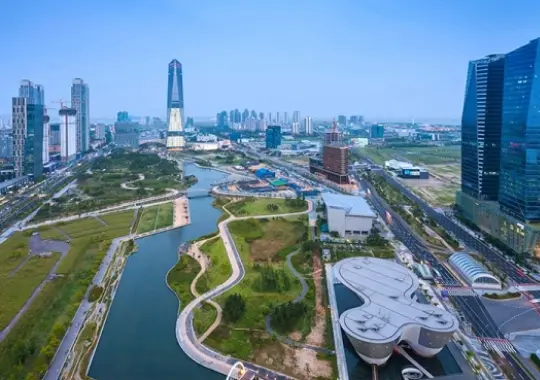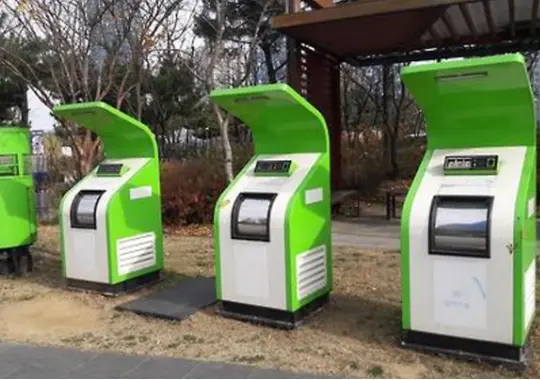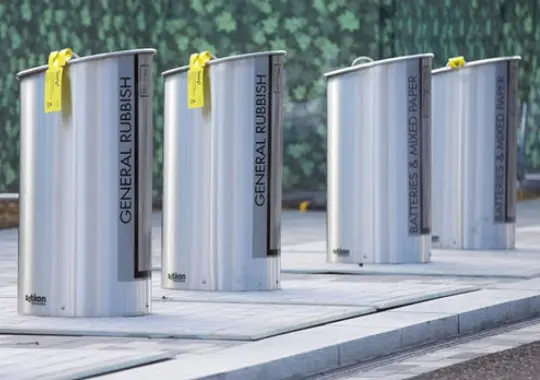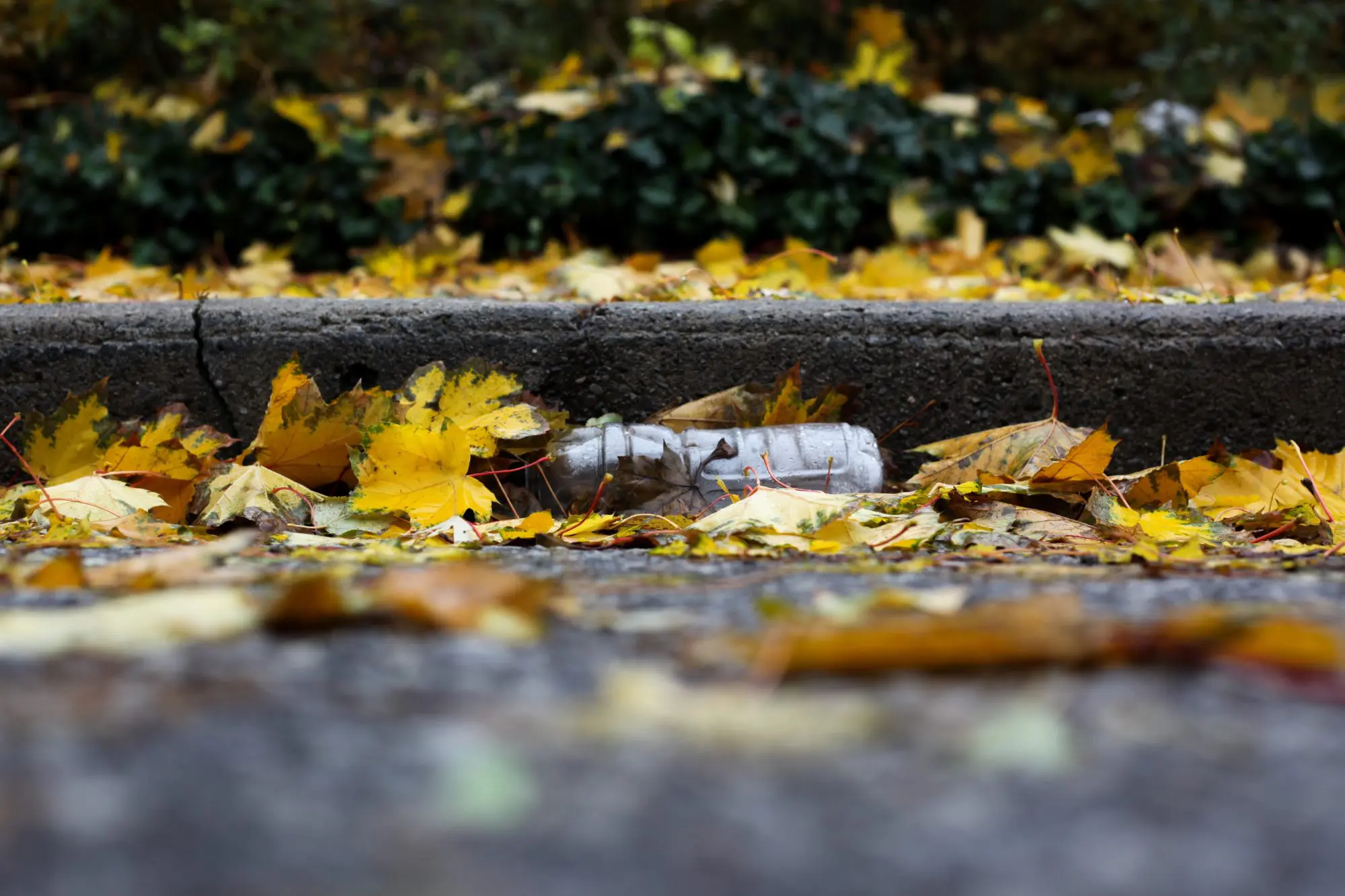This story features in Unearthed: The cities of the future
Cities are in search of a cleaner, faster, neater solution to the rumbling garbage truck. Pipes, suction and automated disposal could be the answer.
How we dispose of our waste in the coming decades is a subject big enough to fill up a dozen reports. This complex topic spans issues from bi-degradable plastic, to mandatory composting, to 3D printing, to changing the makeup of cigarettes so they can be more easily recycled. Nearly 40% of city street litter is cigarette and tobacco waste.

Here we’re just going to look at one facet, waste disposal and transport. We take you now to Songdo, South Korea’s privately built smart city, designed as something of a sci-fi experiment to lure businesses and families away from Seoul, 40 miles to the east. In 2000 it was still a stretch of tidal flats until the Korean government added 500 million tons of sands to create a new commercial district near the international airport.
Of all the innovations attempted in the city, the one most often quoted is its waste disposal system. Garbage trucks simply don’t exist here. When rubbish is placed in trash cans across the city’s apartments, kitchens, halls and offices, it’s then automatically sucked out through a series of pressurised pipes to an underground sorting centre where it’s separated to be recycled, buried or burned for energy. It’s a proper Jetsons future – cleaner, quieter, more efficient, with trucks off the streets, pollution down, and rubbish not humming gently in the heat until collection day.

Automated trash has a history
While slick, behind the scenes, vacuum collection of waste frequently pops up as a must-have in future city plans, it’s not as new or radical as it sounds. The technique actually dates to the 1960s and was first introduced in Sweden for hospital use.
Obviously there have been advances. For example, today’s automated trash cans are remotely monitored to check when they’re full and ready to be emptied. And Songdo’s set-up is so highly mechanised that when the BBC visited the plant in 2016, they could only count seven employees. In the past, less hi-tech systems have called on users to separate waste out before popping it into the appropriate chute – cardboard, food, etc. An early example would be Roosevelt Island on the East River in New York. Since the 1970s, 16 tower blocks have fed the island’s entire waste through a series of pressurised chutes into a now rather dated extraction system. Disneyland was an early proponent too.
But increasingly, as in Songdo, the smart cities of the future will handle that automatically at the sorting centre. Tough waste, such as glass and metal, can still give the system a hard time though, abrading the pipes down which it’s transported. Finnish company MariMatic has become something of a world leader in this technology, in part through the patents it developed for specially durable bends to solve the issue.
MariMatic is also behind what’s claimed to be the largest AWDS (automatic waste disposal system) in the world, at work under the largest mosque in the world, the Al-Masjid al-Haram in Mecca, Saudi Arabia. It collects 900 tons of solid waste every day, and transports it through a 30 km network of pipes to a waste station where it’s compacted.
Bringing older cities up to speed
Meanwhile, back in New York, the High Line project has explored a retrofitted solution for cities struggling with waste. It transports up to 30 tons of material a day through 1.5 miles of pneumatic tubing slung beneath an elevated parkway.
Such is New York’s challenge in this field, the city’s Department of Sanitization recently offered a $1 million contract to whoever could deliver a workable Save As You Throw program. Incentivized waste disposal, where a city’s population receives micro-sized tax or rent rebates for everything they responsibly dispose of, is a holy grail for conurbations desperate to drive down the cost of waste disposal. Unfortunately, it’s hugely complex because of the number of stakeholders involved.

A stepping stone to Songdo’s all singing waste disposal system is the use of underground bin systems, which is starting to catch on across Europe. Bin chutes set into the pavement outside homes feed rubbish into underground containers that are then hoisted out by specialist vehicles. Homeowners no longer need individual bins cluttering up their property (when the system was installed in a UK suburb last year, it replaced 9000 wheelie bins) and trucks come out less frequently.
However, whereas as new smart cities can design their disposal systems from the (under)ground up, ‘retrofitting’ attitudes towards waste, such as Save As You Throw, might yet remain the more achievable target for older cities.
At Sequeent, we are always looking at what’s happening below the surface. If you would like to read more articles like this one, check out our Unearthed Report: Future Cities and how Geology will play its part. Or follow us on LinkedIn for regular industry content and case studies.
